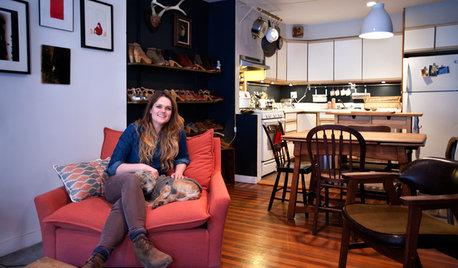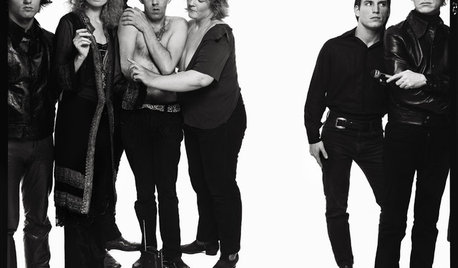Meat article in the New Yorker
TACHE
16 years ago
Related Stories

SHOP HOUZZShop Houzz: The Vegetarian’s Kitchen
Skipping the meat is as easy as pie with our picks for a vegetarian kitchen
Full Story
HOUZZ TOURSMy Houzz: A 'Shoe-in' for Creativity in Brooklyn
Can a mini shoe showroom, an office and chic living spaces fit into just 750 square feet? See how one New Yorker made it happen
Full Story
TROPICAL STYLEMy Houzz: New York Chic and Laid-Back Hawaiian Style on Maui
A relocating New Yorker designs an island home influenced by her former city life
Full Story
EVENTSDesign Calendar: May 3–24, 2012
Not to miss for New Yorkers: a Richard Avedon portrait exhibit and the Frieze Art Fair. West Coasters, get out your bicycles
Full Story
DECORATING GUIDESHouzz Tour: An Artistic Blend in a Luxe Manhattan Loft
Two New Yorkers move in together and combine their art collections in a sumptous two-story space
Full Story
KITCHEN DESIGNKitchen of the Week: A Separate Peace for a Manhattan Studio
Savvy design tricks help a petite urban kitchen look not just separate, but visually distinct
Full Story
FURNITUREGuest Picks: Stylish Sofa Beds
Even small homes can provide comfortable guest accommodations with the right sofa bed
Full Story
SMALL HOMESMaking Room: Discover New Models for Tiny NYC Apartments
Explore a New York exhibition of small-space design proposals that rethink current ideas about housing
Full Story
LIVING ROOMSRoom of the Day: Cool Style for Manhattan’s Ice House
Refined and informal blend beautifully for a condo that’s chic and approachable all at once
Full Story
GREAT HOME PROJECTSHate Hauling Laundry? Give Dirty Clothes the Chute
New project for a new year: Install a quick route to the laundry room
Full Story


jessyf
laceyvail 6A, WV
Related Discussions
Article on light pollution
Q
OT - Upstate New Yorkers? Hudson Valley questions
Q
Canning Meats
Q
Brisket - "a tricky meat to cook"
Q
mimsic